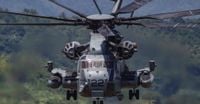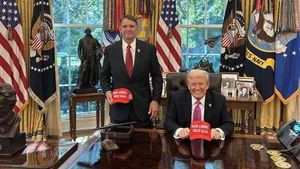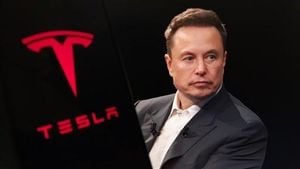With the unmistakable roar of U.S. Navy warships echoing off Venezuela’s northern coast, the world’s attention has once again turned to the tense standoff between Washington and Caracas. On October 18, 2025, Venezuelan President Nicolás Maduro announced that his government had completed a comprehensive plan to defend against what he called "American threats," capping off weeks of military posturing and escalating rhetoric. The United States, for its part, has amassed a formidable military presence in the Caribbean, deploying stealth warplanes, guided-missile destroyers, and thousands of troops in what officials describe as a sweeping counter-narcotics initiative. Yet, as both sides dig in, the real stakes and endgame remain shrouded in uncertainty.
This latest chapter in U.S.-Venezuela tensions began in early September, when the U.S. military launched a series of lethal strikes on civilian boats in the Caribbean. According to The Washington Post and CBS, American officials allege these vessels were operated by Venezuelan drug cartels, which the Trump administration has now designated as terrorist organizations. The toll has been grim: at least 27 people killed in six separate attacks, with two survivors from the most recent incident now detained by the U.S. Navy. The operation, as NBC reported, marks the first time prisoners of war have been taken in this new conflict.
President Donald Trump has not minced words about the seriousness of the campaign. Informing Congress that the U.S. is now in a "state of armed conflict" with Venezuelan cartels, Trump has authorized covert CIA operations inside Venezuela and openly considered land strikes against targets linked to the Maduro regime. In a White House briefing, Trump dismissed reports of de-escalation overtures from Caracas, stating, “He’s given us everything, you’re spot on. And you know what? He doesn’t want to mess with America.”
The military buildup is significant, even by historical standards. As Vox detailed, the U.S. has committed more firepower to the Caribbean than it did during the pivotal Battle of Midway in World War II. The deployment includes 10,000 troops, F-35 fighter jets, MQ-9 Reaper drones, and a secretive vessel designed for special operations forces. Special operations helicopters have reportedly flown within 90 miles of Venezuela’s coast, and B-52 bombers have patrolled the skies nearby, tracked by civilian flight monitors.
Maduro, facing these mounting threats, has responded with a mix of bravado and mobilization. In a recording released on Telegram, he declared, “Today we have completed all the country’s integrated defense zones.” The Venezuelan leader ordered a new round of military exercises, dubbed Independence 200, and mobilized 17,000 soldiers to the Táchira region along the Colombian border. State television broadcast images of soldiers leaving barracks, joined by police, civil protection staff, and civilian militia members. In a televised address, Maduro railed against the prospect of regime change: “No to regime change, which reminds us so much of the endless, failed wars in Afghanistan, Iraq, Libya, and so on. … No to CIA-orchestrated coups d’état.”
The U.S. campaign has not been without controversy. Legal scholars, cited by AFP, argue that the strikes—carried out without explicit congressional authorization—violate international law, even against verified cartel members. The operations have also drawn neighboring countries into the fray. Authorities in Trinidad and Tobago are investigating the deaths of two local nationals killed in a U.S. raid, while Colombian President Gustavo Petro has raised concerns that Colombian citizens may have died in the assaults.
Behind the military maneuvers lies a tangled history of U.S.-Venezuela relations. Since Hugo Chávez took power in 2000, the socialist Bolivarian regime—first under Chávez, now under Maduro—has positioned itself as a thorn in Washington’s side, supporting militant groups abroad and forging ties with U.S. adversaries like Russia, Iran, and Cuba. Over the past decade, Venezuela’s economy has collapsed, with hyperinflation, unemployment, and widespread corruption fueling the world’s largest refugee crisis: more than six million Venezuelans have fled their homeland.
For the Trump administration, removing Maduro has been a long-standing priority. After Venezuela’s widely disputed 2018 presidential elections, the U.S. recognized opposition leader Juan Guaido as the legitimate head of state—a stance reaffirmed after the similarly contested 2024 vote. The administration has combined overt measures, like sanctions and diplomatic isolation, with covert actions, including cyberattacks and espionage. In 2020, Maduro was indicted in New York on charges of narcoterrorism and cocaine smuggling, with a $50 million bounty placed on his arrest.
Despite these efforts, there have been moments of limited cooperation. Earlier this year, Trump’s envoy Ric Grenell brokered the release of several detained Americans and negotiated a deal for Venezuela to accept repatriation flights of deported citizens from the U.S. But by April, the thaw had frozen over, and the administration’s hawks—most notably Secretary of State Marco Rubio—reasserted a strategy of "maximum pressure," including the possibility of military intervention.
The Trump administration has invoked the Monroe Doctrine, the 19th-century policy asserting U.S. preeminence in the Western Hemisphere, to justify its renewed focus on Latin America. Chris Sabatini of Chatham House described Maduro’s removal as “unfinished business” and said the current escalation is calibrated to appeal to Trump’s political base, linking Venezuela to the administration’s priorities on drugs and migration. The administration has accused Maduro of weaponizing gangs, drugs, and mass migration, though, as Vox notes, there is no concrete evidence the regime controls the notorious Tren de Aragua gang or is orchestrating migration.
While Venezuela is not a major producer of cocaine, it has become a major transshipment hub for South American narcotics bound for the U.S., Central America, and even Europe. Over the summer, the U.S. designated the Cartel de los Soles—a loose network of senior Venezuelan military officials allegedly involved in smuggling and illicit gold mining—as a terrorist group. Jeremy McDermott of Insight Crime described the cartel as a “feudal system,” with Maduro granting subordinates control over criminal enterprises to ensure loyalty, rather than acting as a traditional cartel boss.
Opponents of the Venezuelan regime see the targeting of these criminal networks as key to breaking Maduro’s grip on power. Miguel Pizarro, a senior opposition aide in Washington, argued, “Narcotrafficking and illicit economies are the glue that is keeping the high ranks within the Army loyal. This regime’s structure has a lot more to do with money, privilege, and corruption than with ideology.”
Yet, the risks of escalation are real. The closest precedent—the 1989 U.S. invasion of Panama to oust Manuel Noriega—took place in a much smaller, less volatile country. Experts warn that Venezuela’s size and fragility make a similar operation far more perilous. Chatham House’s Sabatini cautioned, “Just taking out the top echelon is not going to change the regime, and it’s also unlikely to provoke a democratic transition.”
For now, the world watches as the U.S. and Venezuela circle each other, both sides braced for the next move. Whether this high-stakes standoff leads to regime change, a negotiated settlement, or a dangerous escalation remains to be seen. But as the warships linger off Venezuela’s coast and soldiers mobilize on both sides, the prospect of a new conflict in the Americas feels closer than it has in years.




